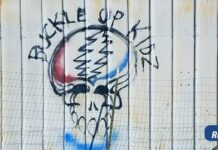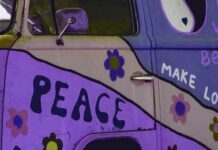Lunabotics Mining Competition
Rocklin, Calif. – Under the shadow of the Saturn 5 rocket at the NASA Space Center in Orlando Florida, Rocklin High School student Patrick Kelly watched as the trophy, he and three other students designed and Sierra College produced using a 3D printer, was presented May 28 at NASA’s first annual Lunabotics Mining Competition.
The trophy, developed by high school students and made in Rocklin, CA using the Sierra College Center for Applied Competitive Technologies rapid prototyping equipment, was presented to Montana State University’s team.
The two-day competition attracted 22 university teams that designed and built remote controlled or autonomous excavators (lunabots) to collect and deposit a minimum of 10 kg of simulated moon dirt within 15 minutes. The event was hosted by the NASA Exploration Systems Mission Directorate (ESMD) in collaboration with NASA Lunar Surface Systems to promote Science, Technology, Engineering and Math (STEM) as well as encourage innovation in lunar excavation.
Rocklin High School instructor Dan Frank teaches Engineering Support Technologies (EST) and made the initial connection with NASA. “The EST program of study at Rocklin High School engages students in the product development cycle”, said Frank. “When I contacted NASA to explore opportunities, I discovered that they needed a Lunabotics trophy. Making the award offered a creative, real world product design challenge that would entice my students.”
Patrick Kelly, John Gildea. Michael Porter and Bryce Adams designed a six wheel, 8x12x2 inch model of a lunabot. They developed the trophy concept from a picture on the competition announcement and began sketching ideas. They designed each component’s wheels, hubs, bracing and frame using Inventor software. Then they produced, tested and refined their model.
According to Frank, students learned the subtractive production process where material is milled and machined off solid material to make the parts as well as the additive process where material is added in to build up the parts through rapid prototyping. “Producing the trophy on Sierra College’s three dimensional printer cut the development time in half and reduced the cost by more than 80% when compared to machining,” said Frank. “The students also learned functional analysis and changed the design after they evaluated the model.” Students can use these skills to study Engineering Support Technology, Engineering, Mechatronics and Energy Technology at Sierra College, and pursue Science, Technology, Engineering and Math careers.
Sierra College Center for Applied Competitive Technologies (CACT) provides technical expertise and rapid prototyping services to Northern California Manufacturers reducing the cost and time it takes to develop new products and get them to market. Sierra College CACT and Training & Development also offer on-site customized employee training.
(21+ years strong)
Welcome to the brighter side!
Get in front of local customers! 24/7 (365)





















